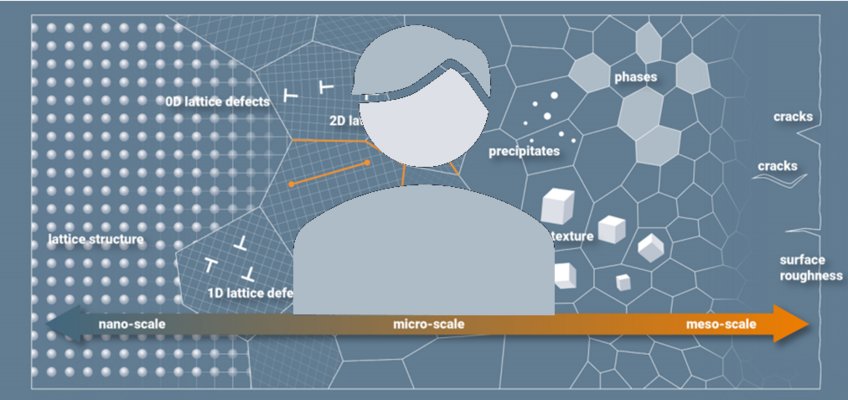
Some new ideas to model artefacts in Atom Probe Tomography: application to 3D reconstruction
APT is a powerful analytical microscope that provides chemical information at the atomic scale. However, it can suffer from great artefacts when several materials are present in the same sample: this is the so-called local magnification effect. This is a well-known effect, but remains still uncorrected in the 3D APT reconstructions. There are essentially two ways to understand the origin of such artefacts. First, it is possible to explain them qualitatively with a mesoscopic modeling of the tip shape. Consider for example the pedagogical “precipitate in a matrix” example. The radii of curvature of the two phases will be proportional to the inverse of the evaporation field of the material (i.e. precipitate or matrix). In turns, the magnification is different above each phase, and can lead to the well-known trajectories overlap. On the other hand, it is now possible to simulate very accurately the field evaporation in APT at the atomic scale, thanks to advanced numerical simulation tools. This latter approach has the advantage to be more quantitative than the former, but the computation time makes it difficult to use it to improve 3D reconstructions.
We propose some new ideas to improve these two approaches. A new numerical simulation model is proposed to get rid of the rigid mesh introduced to compute the electrical potential spatial distribution, that consumes a lot of memory and prevent us for modeling pre-evaporation phenomena. The hypotheses of the mesoscopic model are also discussed, and eventually 3 principles are highlighted to model the tip shape evolution during field evaporation. We show that these principles, when applied to multilayered samples, can be used to significantly improve the fidelity of the 3D reconstruction.
Nicolas Rolland
Groupe de Physique des Materiaux
UMR 6634 GPM
Avenue de l'université CS 70012
76801 St Et. du Rouvray Cedex
France
| Nicolas Rolland | |
| Http | Nicolas Rolland, Université Rouen |
| Groupe de Physique des Materiaux |